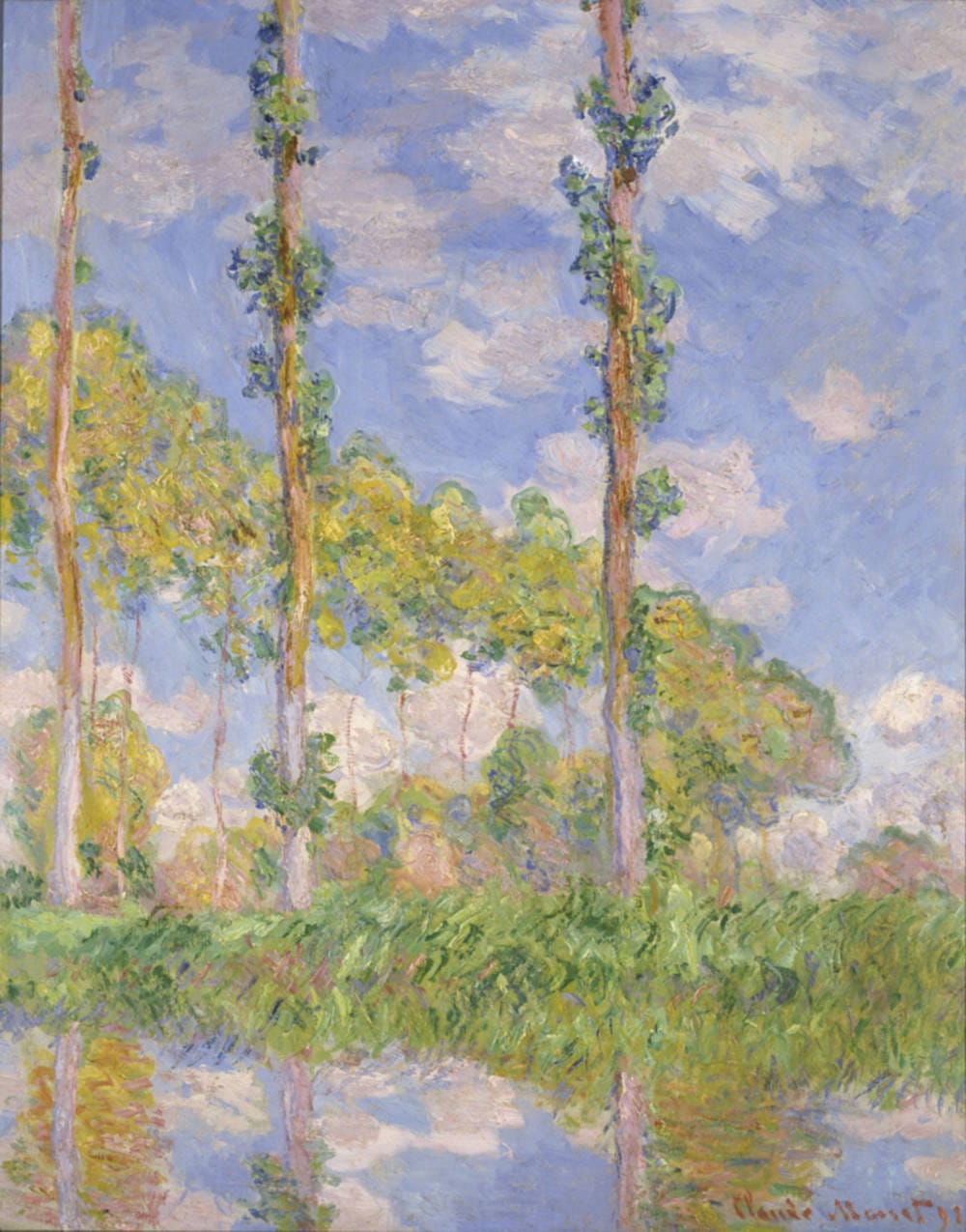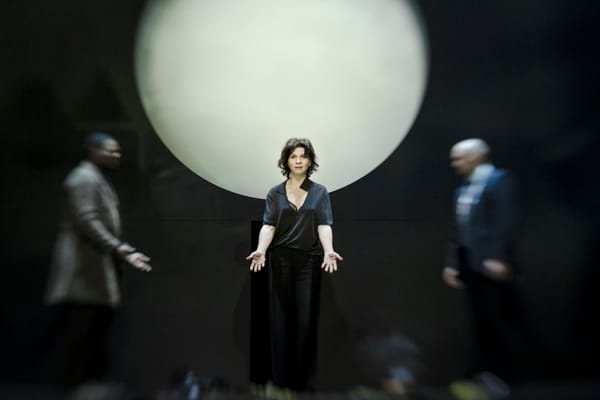The Grand Master of Impressionism
Indira Mallik takes a tour of artistic history at the National Gallery

It’s not often that exhibitions are staged in celebration of art collectors. Perhaps it feels more like honouring the monetary value of the work than its impact, but Inventing Impressionism at the National Gallery shows how focussing on the collector can sometimes be a stroke of genius. The exhibition showcases the work of Renoir, Monet, and Degas amongst others through the life of Paul Durand-Ruel, a French art collector who is credited with championing the work of the Impressionists when contemporary reviews were mostly hostile.
We are introduced to the man himself at the opening room of the exhibition in a simulacrum of his drawing room. Displayed around a large black and white photograph of his drawing room are the paintings that hung there: Renoir, Monet, Cassat; a Rodin sculpture sits on the mantelpiece; a few chandeliers and Louis XIV chairs are thrown in for good measure. Presiding over it all is a likeness of Durand-Ruel by Renoir, whose rendering is unusually subdued, made up entirely in a palette of umbers and burnt siennas. A door with inlaid panels is also exhibited – made remarkable by the fact that they were decorated by Monet with small paintings of chrysanthemums and apples. Durand-Ruel wanted to show clients that they could display art in the unlikeliest of places.
Through the exhibition the image of Paul Durand-Ruel emerges not so much as the inventor of Impressionism, but as the inventor of the modern art world we know today. As a proto-modern art dealer he threw lavish parties, bought paintings for many times the average annual wage of a Frenchman of the time, and sometimes bought back the paintings that he thought had sold for too low a price. He was a shrewd business man; when the paintings by the ‘new painters’ didn’t sell in his galleries, he invited clients to his home to see how stunning the paintings would look in a domestic setting. He set out to conquer international territory too; with the Paris and London scenes exhausted, he exhibited paintings in America, which saw the popularity and the fortune of Monet grow.
They were the first to reflect the world they saw around themselves back at the viewer
Durand-Ruel made his fortune selling paintings by the more established Courbet and Delacroix and well as works from the Barbizon school such as those of Charles-François Daubigny. Duabigny’s technique of painting outdoors had led him to make Monet’s acquaintance; it was through Monet that Durand-Ruel met Pissarro. The works of all three painters are exhibited alongside each other which highlights not only Durand Ruel’s journey as a collector, but the progression of the artists and their influences as well. Monet and Pissarro continued Daubigny’s exploration into painting out of doors and would finish their paintings en plein air instead of back at the studio.
Durand-Ruel’s taste for the more modern is clear in earlier finds as well. Gustav’s Courbet Woman in Waves shows the goddess Venus rising from the surf, reminiscent of so many of the earlier mythological works, but here he includes the model’s underarm hair, directly subverting the idea of femininity in his depiction of beauty personified. Durand-Ruel is rumoured to have paid a record price for this work, saying that this sort of work was far more to his taste than the academic pieces that he was accustomed to collecting. Subversion and the beginning of modern art are a continuing theme throughout the sixty plus pieces on show. Degas provides customary humour in his paintings, focusing on the balding heads of the audience as opposed to the scene being played out on stage in The Ballet Scene, or on a disinterested teacher reading the paper rather than the dancers in The Ballet Class.
The exhibition also seeks to highlight just how modern the Impressionists were; while the painters of previous generations used naturalistic colours and tiny brushstrokes blended together, the pieces of Renoir and Monet show just how liberated painting became. Instead of adopting muted shades, even the white dresses Renoir paints are alive with technicolour hues, lemon yellows, and cobalt blues. The brushstrokes are similarly vivacious – visceral daubs rather than layers and layers of gossamer fine renderings of colour. Even the subject matter is modern. Setting aside the previous generations’ fondness for staged portraiture, mythological or biblical scenes, we are presented with scenes of contemporary suburbs, city life; Monet’s loose brushwork in his numerous paintings that depict the Thames echo the veil like fog that permeated the city at the time.
Although staged around Durand-Ruel, the art takes centre stage
The Impressionists were the first to reflect the world they saw around themselves back at the viewer, heightened and resplendent in colour – a celebration of the ordinary. Monet’s ginormous depiction of golden brown pastries in The Galettes is enough to hearten any foodie Instagrammer – if it’s good enough for him, it’s probably good enough for us. It is through these artists that we were first offered a glimpse into the modern world. Monet’s _Green Park _is furnished with stick like figures oddly reminiscent of L S Lowry’s scenes of urban Manchester.
In some of the pieces we also see the beginnings of abstract painting. In Alfred Sisley’s The Flood, vertical lines of a submerged tree and a telegraph pole are reflected in the flood waters, which meld into the same hued sky. For me, the undisputed star of the exhibition is the Poplars series by Monet. Monet painted 24 canvases of poplars in differing lights and seasons; here six have been reunited from across the world for the first time in many decades. The exhibition is worth the admission price for these alone. The trees pierce the canvas dead straight, tearing through the backdrop of sky and cloud; foliage swirls around the trunks like a gymnast’s ribbon. The brushstrokes echo their movement in broad sweeps.
_Inventing Impressionism _is something of a blockbuster for the National Gallery. In bringing together so many big names, it creates a primer on Impressionism and the great art of the late 19th century. Although staged around Durand-Ruel, it is the art that unquestionably takescentre stage. Impressionism has become such a staple of our art history that we can be desensitized to its power; Inventing Impressionism is the perfect antidote. If you go to just one exhibition this year, make it this one.
Inventing Impressionism is on at The National Gallery, until 31st May. Tickets £16 Adults; £8 Students.









